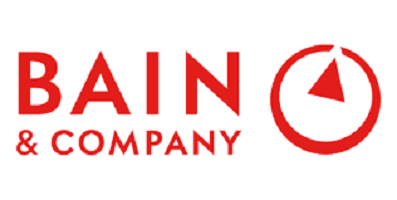
New research from Bain & Company finds that despite the rising numbers of experienced workers in the workforce, few companies are investing in training or upskilling them
NEW YORK, July 13, 2023 /PRNewswire/ — A global study from Bain & Company has found that 150 million jobs will shift to workers over the age of 55 by 2030. That figure is nearly equal to the entire working population of the US. In the Group of Seven (G7) countries, Bain predicts these experienced workers will comprise a quarter of the workforce by the end of the decade—nearly 10 percentage points higher than in 2011.
This trend is most pronounced in high-income countries. In Japan, for example, workers 55 and older will approach 40% of the workforce by the end of the decade. In Italy and Germany, the number is around 30%. This shift is playing out in low- and middle-income countries as well. China’s population of individuals 65 and older is set to double by 2050, and Brazil’s proportion of workers over age 55 is creeping up to the midteens.
Retirement age ticking up
Over the last two decades, fewer young people are entering the workforce, and a long-term trend toward earlier retirement is slowly going into reverse. Forty-one percent of American workers now expect to work beyond age 65. Thirty years ago, it was 12%.
The UK increased its retirement age from 60 for women and 65 for men by pushing both up to 66, with a plan to move up further over time. In Japan, the government struggled to push the official retirement age from 60 to 61, leaving many firms to solve the problem by releasing workers at 60 and rehiring them on new contracts, often at reduced pay rates.
“There was an increase in retirements in some countries during the peak-Covid Great Resignation, but that moment is now looking more like the Great Sabbatical as those workers increasingly return to work,” said James Root, partner at Bain & Company and co-chair of the firm’s think tank, Bain Futures. “People work longer into their lives, yet we’ve found it rare to see organizations put programs in place to fully integrate older workers into their talent system.”
What older workers want
In Bain’s continuing research into worker motivation, the firm surveyed 40,000 workers across 19 countries about what motivates them to go to work and what helps them thrive when they get there. This research shows that as workers age, their priorities evolve. The average worker over the age of 60 is most focused on doing interesting work in a job where they have autonomy and flexibility. Many are focused on mastering their craft, while others feel rewarded by seeing their actions make a positive social impact.
The share of part-time and self-employed workers increases as they approach retirement. But this doesn’t translate to a lack of commitment. Bain’s research shows that older workers feel more loyal to their companies and are more satisfied in work and life. However, few firms are recognizing these changing needs of experienced workers.
A dearth of training for experienced workers
Bain’s research shows that older workers in the US are offered training less often than their younger counterparts. And globally, multigenerational workforce programs—such as reverse mentoring and re-entry programs—are rare, according to the AARP.
“With the right tool kit, aging workers can help employers get ahead of their talent gaps and create high-quality jobs that turn older workers’ skills and experience into a competitive advantage,” said Andrew Schwedel, partner at Bain & Company and co-chair of Bain Futures. “Companies that invest in recruiting, retaining, reskilling, and respecting the strengths of this group will set themselves up for success as the demographics of the workforce continue to shift.”
How to attract and retain older workers
Through understanding the motivations of older workers, both individually and more generally, firms can design their way to success. The approach focuses on three clear steps:
- Retain and recruit older workers by understanding what motivates them at work. Before age 60, the average worker in developed markets is primarily motivated by good compensation. Around 60, there’s a tipping point. Interesting work becomes the top job attribute, and both autonomy and flexibility significantly increase in importance.
- Reskill them for your next 10 years of capability needs. Twenty-two percent of workers aged 55 to 64 say they need more tech skills. For older workers to take advantage of training programs, companies need to design programs that appeal to their pursuit of interesting work and encourage supervisors to motivate participation across all age groups.
- Respect their strengths and allow them to do what they do best by giving space to older workers to mentor and help others master their crafts. Bringing older workers’ unique benefits to the workplace can strengthen workplace culture for everyone.
About Bain & Company
Bain & Company is a global consultancy that helps the world’s most ambitious change makers define the future.
Across 65 cities in 40 countries, we work alongside our clients as one team with a shared ambition to achieve extraordinary results, outperform the competition, and redefine industries. We complement our tailored, integrated expertise with a vibrant ecosystem of digital innovators to deliver better, faster, and more enduring outcomes. Our 10-year commitment to invest more than $1 billion in pro bono services brings our talent, expertise, and insight to organizations tackling today’s urgent challenges in education, racial equity, social justice, economic development, and the environment. We earned a platinum rating from EcoVadis, the leading platform for environmental, social, and ethical performance ratings for global supply chains, putting us in the top 1% of all companies. Since our founding in 1973, we have measured our success by the success of our clients, and we proudly maintain the highest level of client advocacy in the industry.


